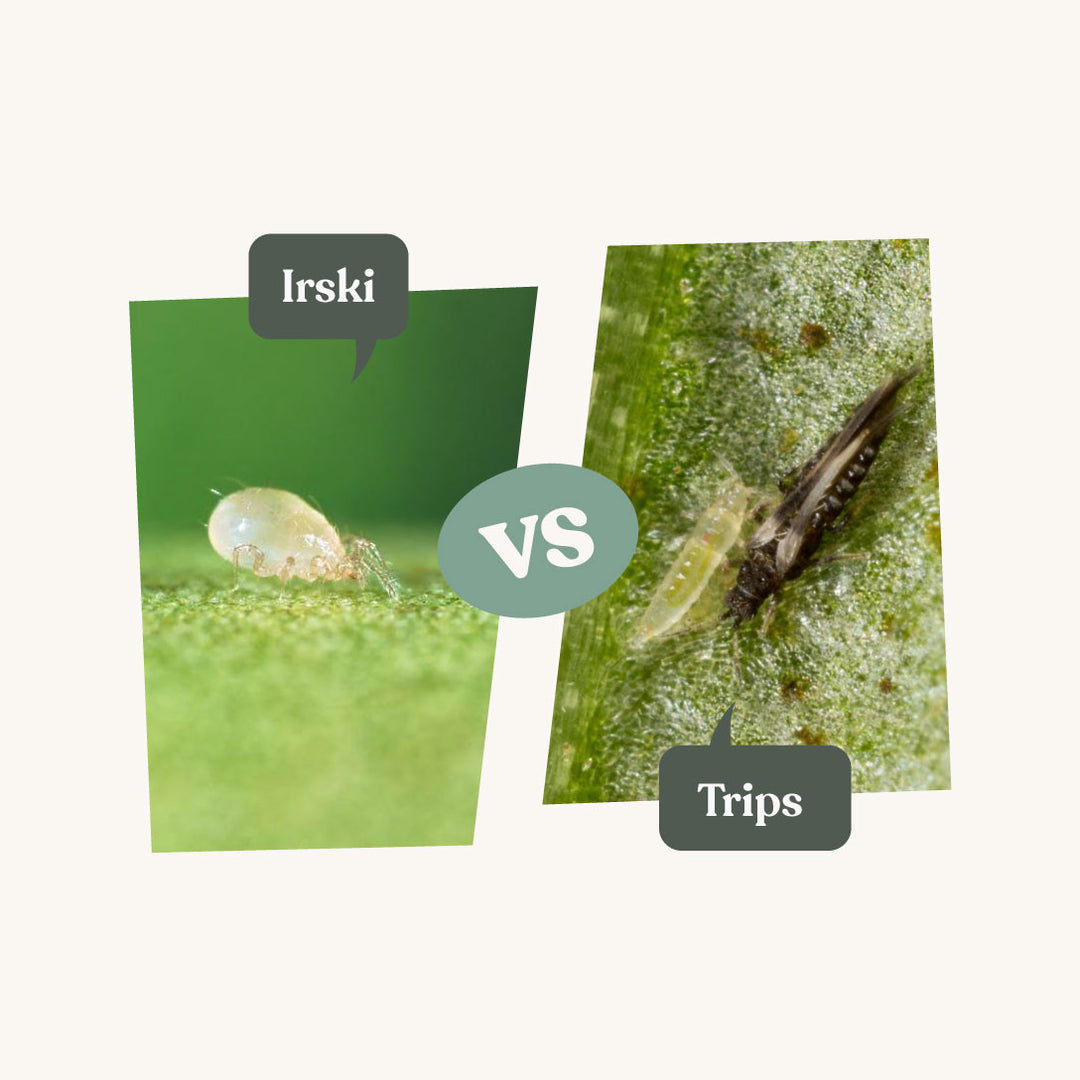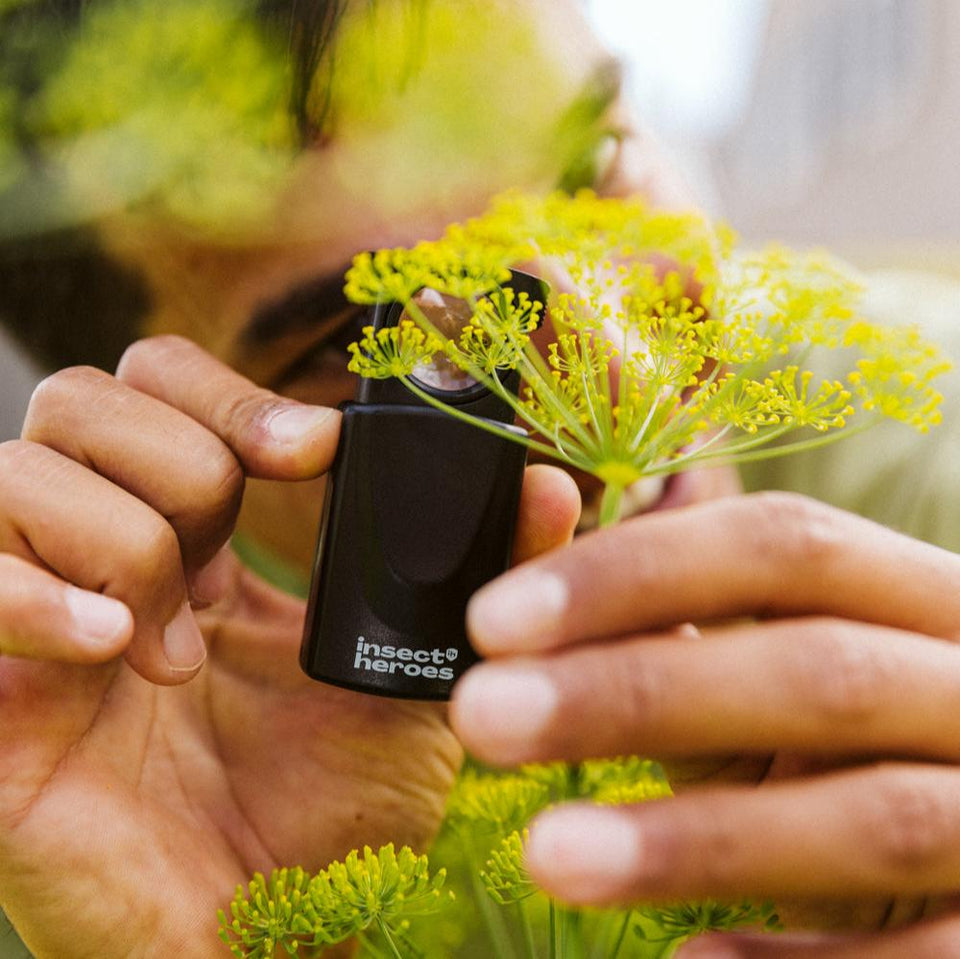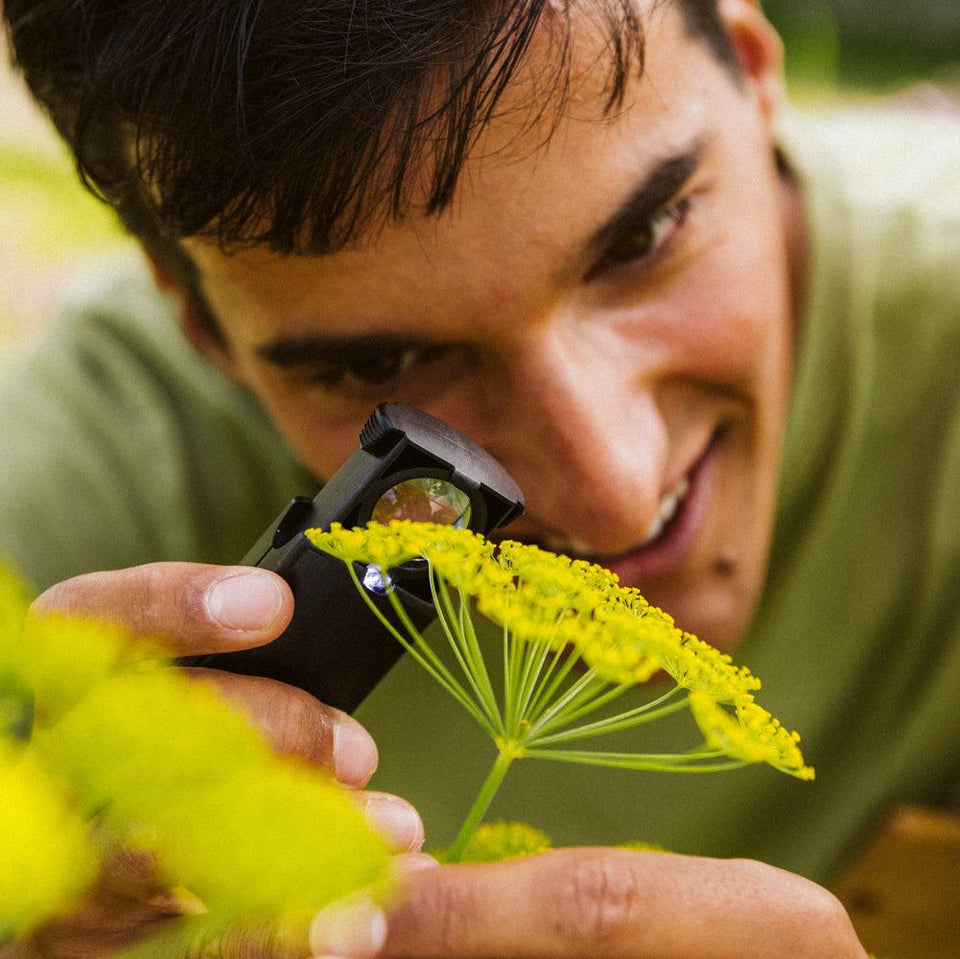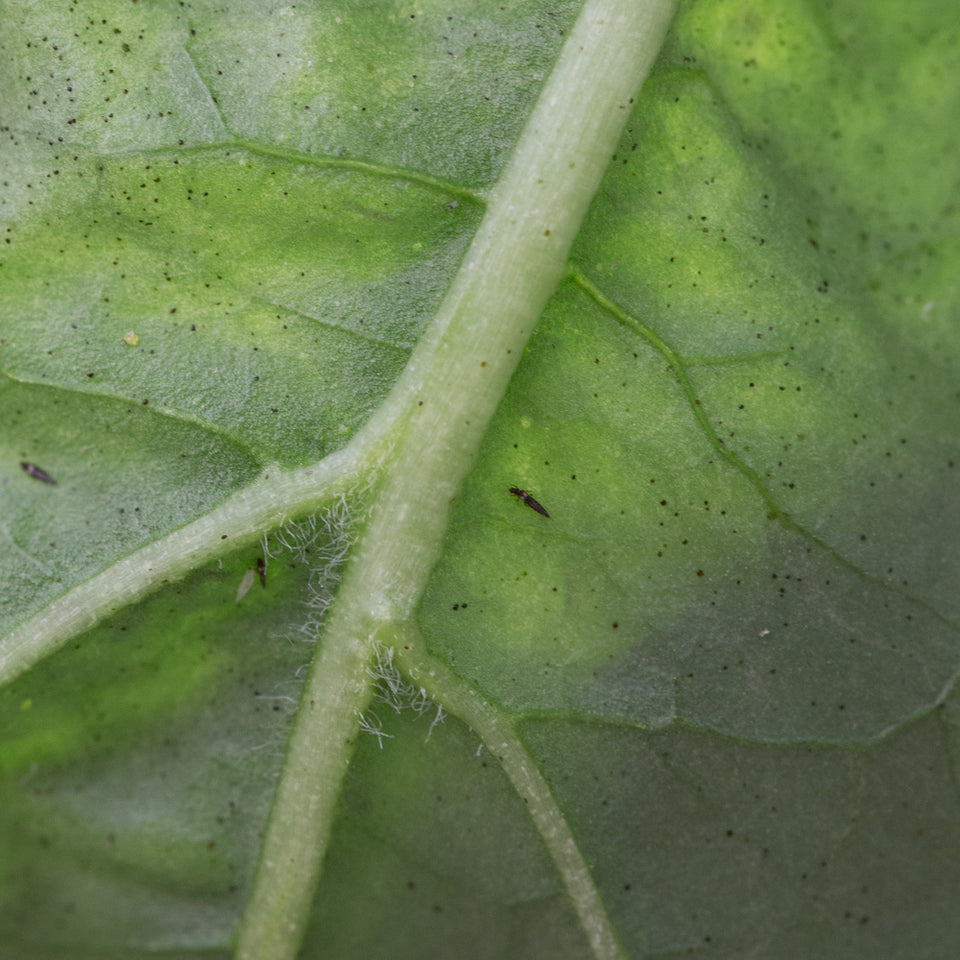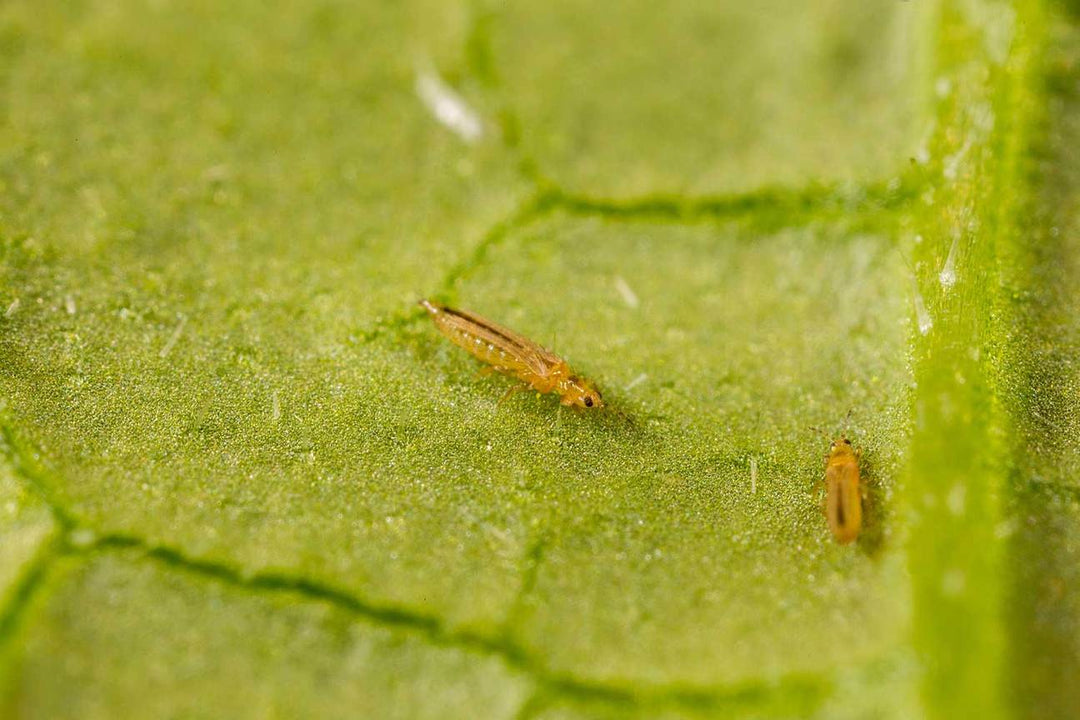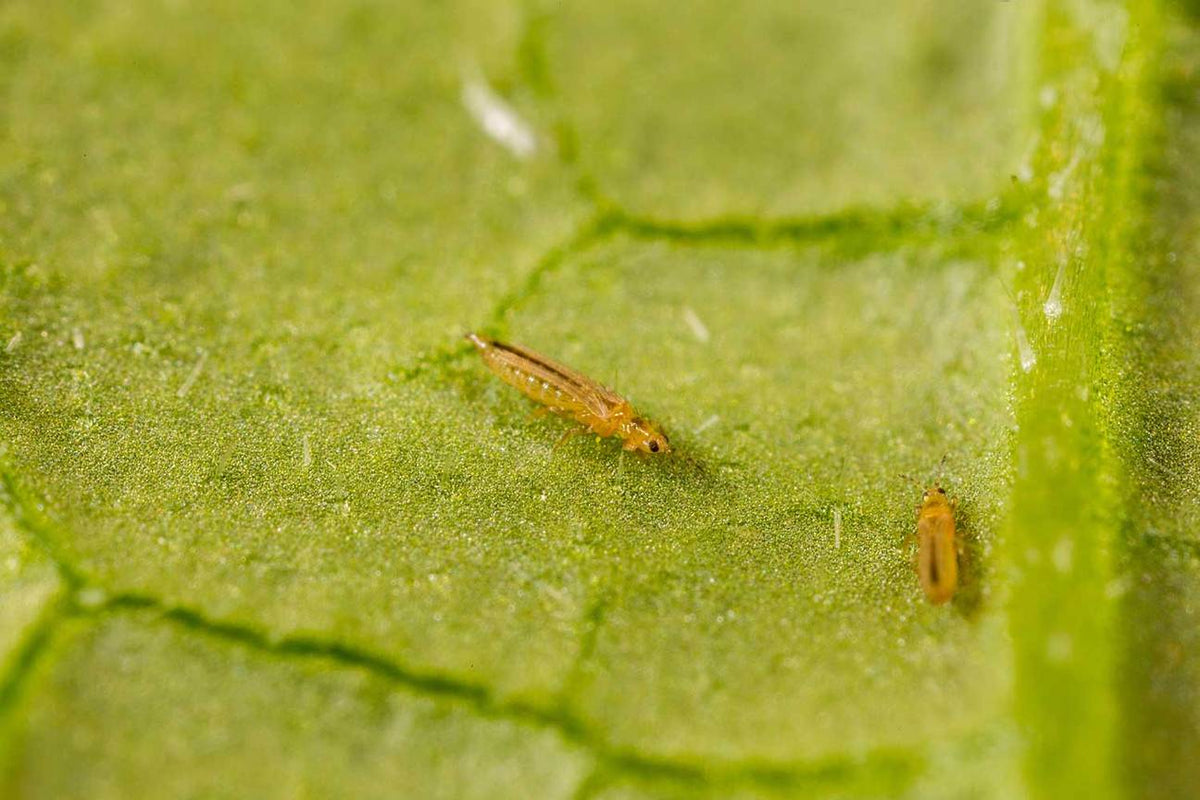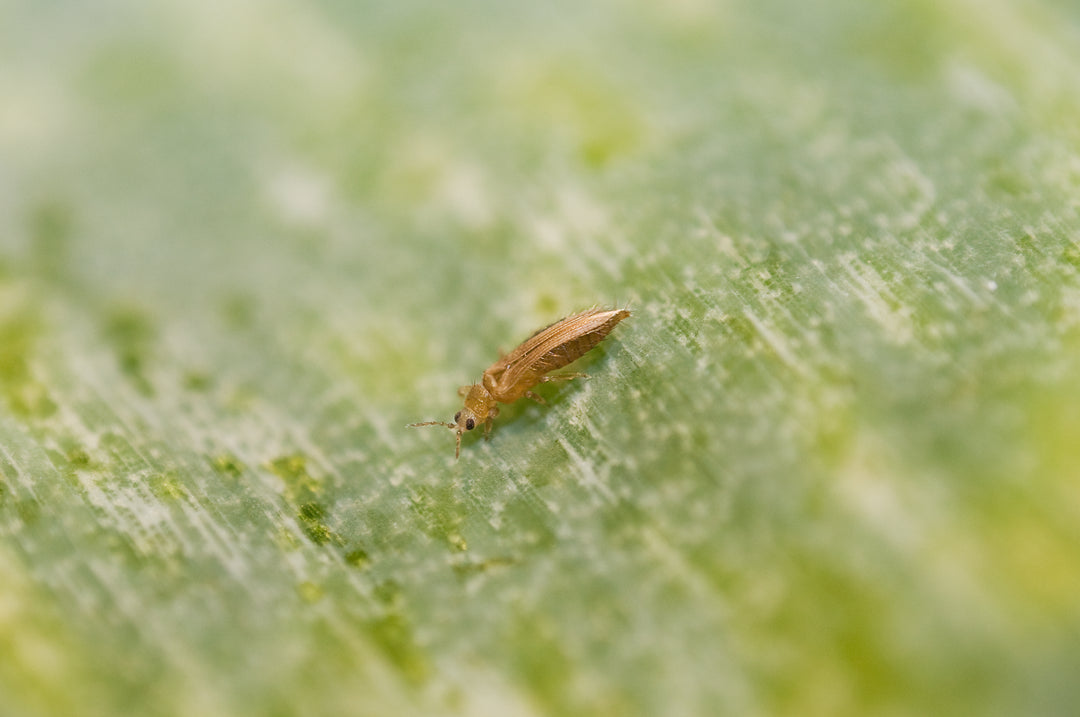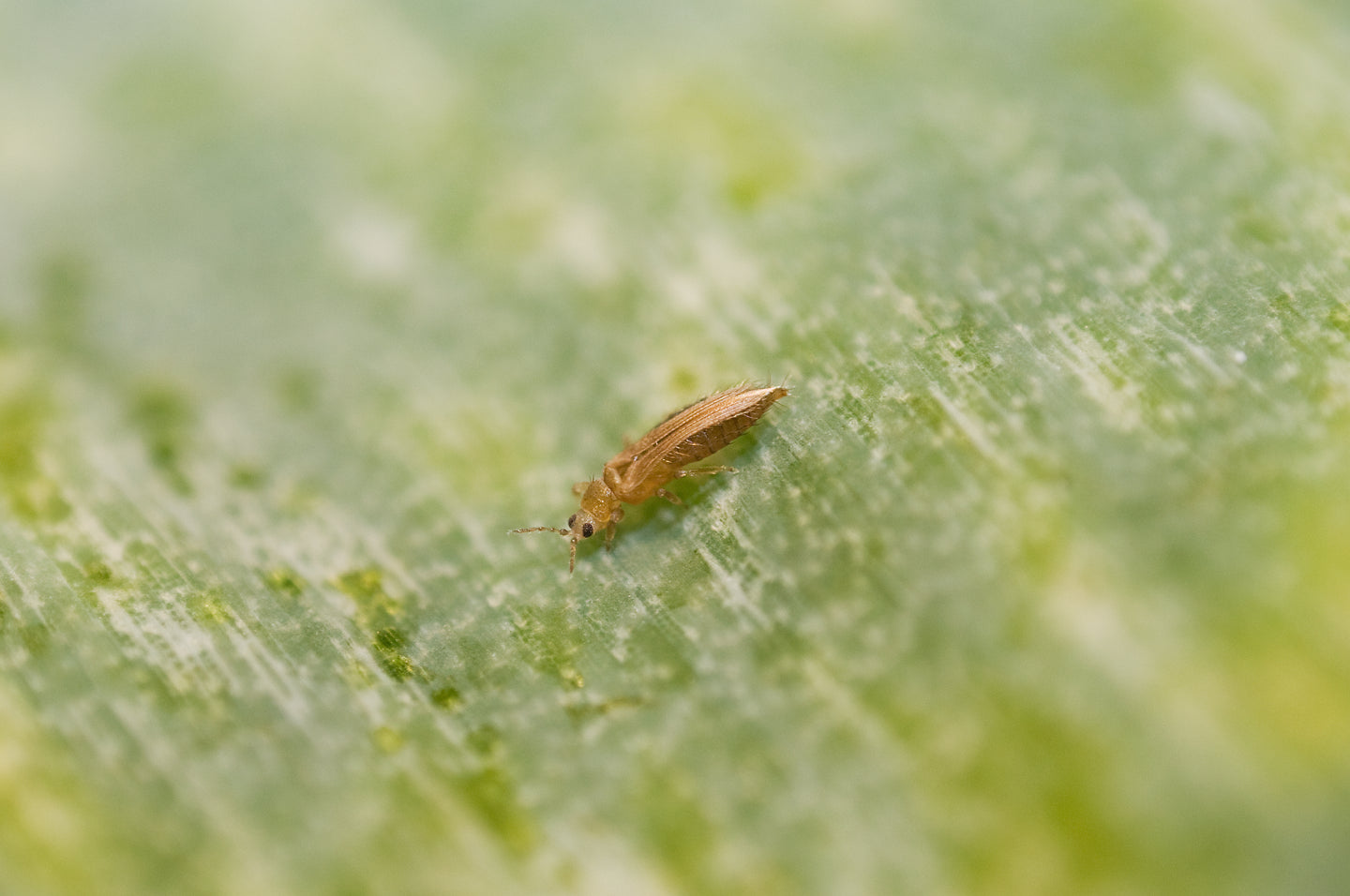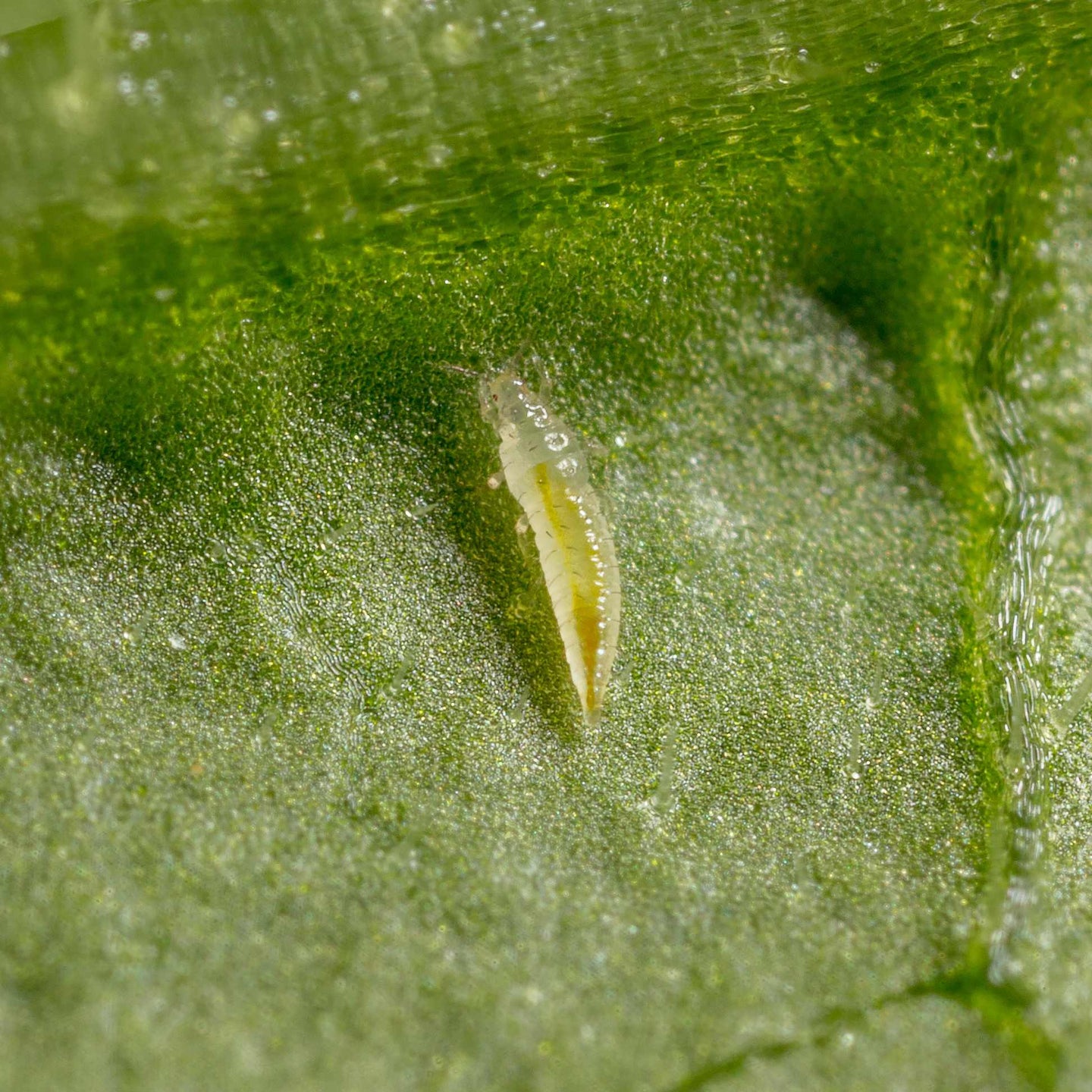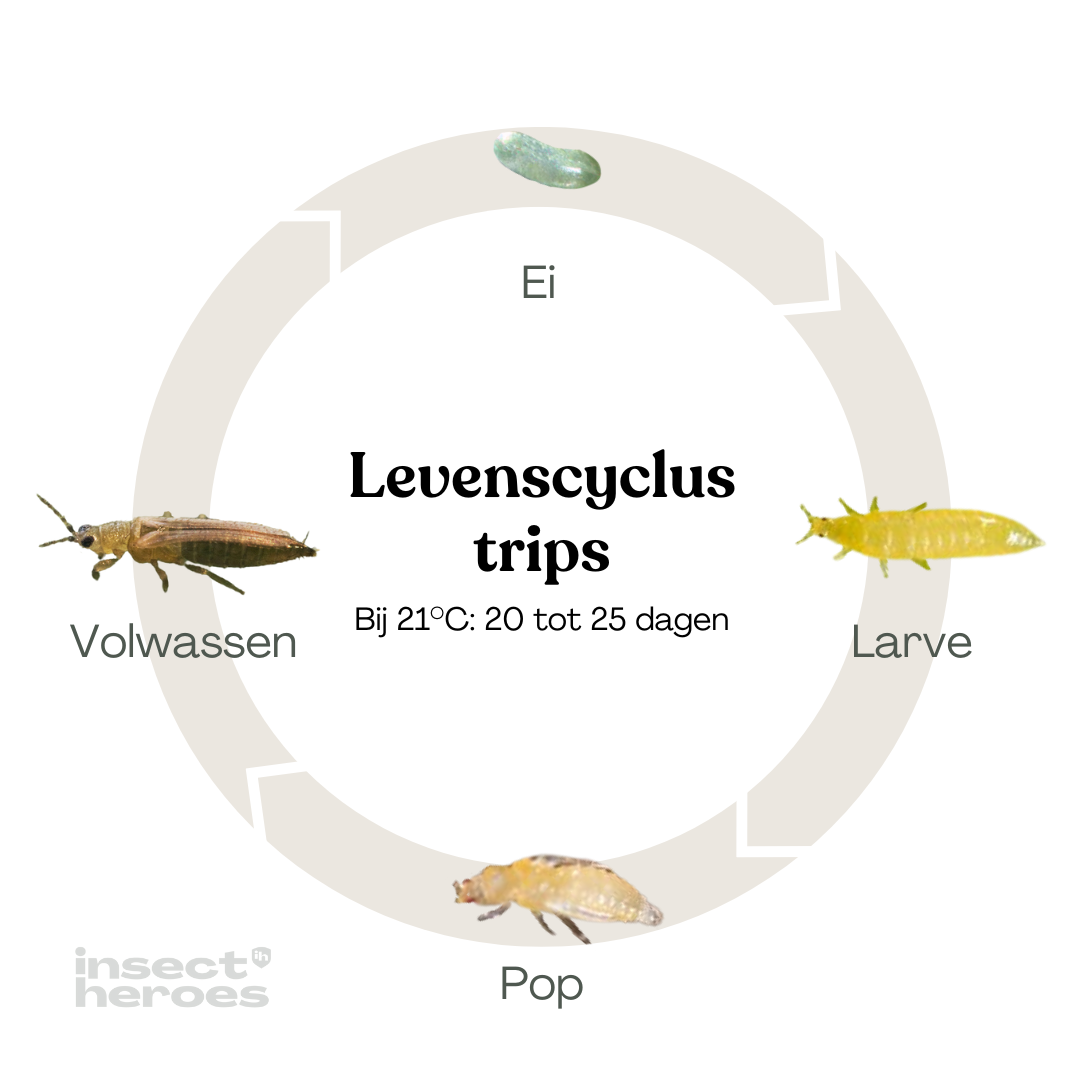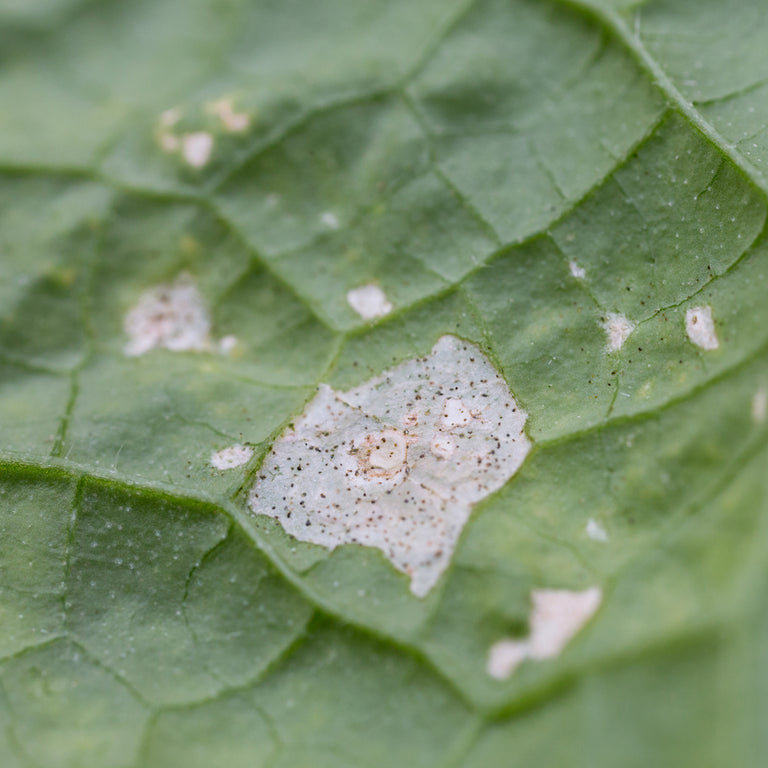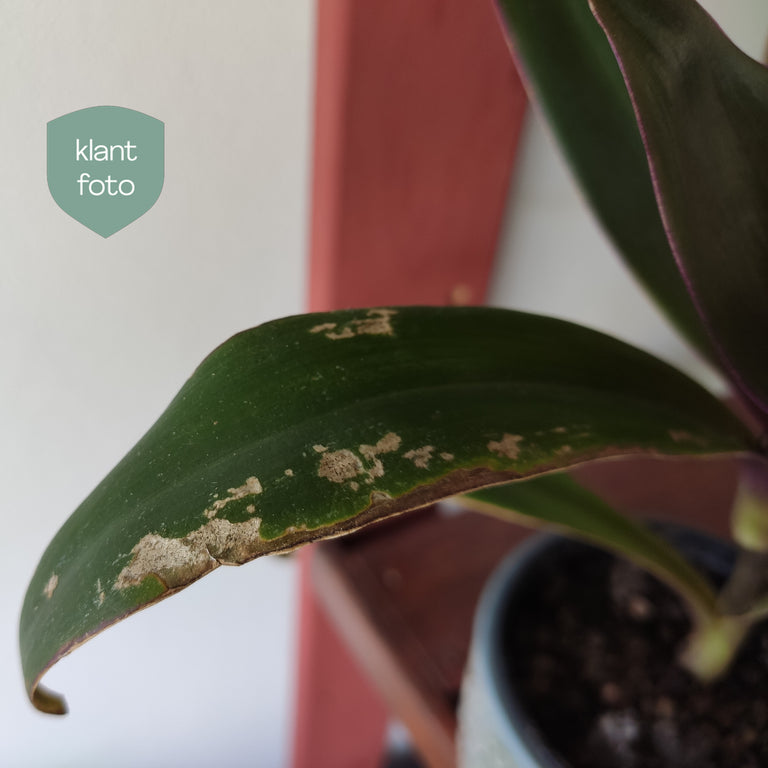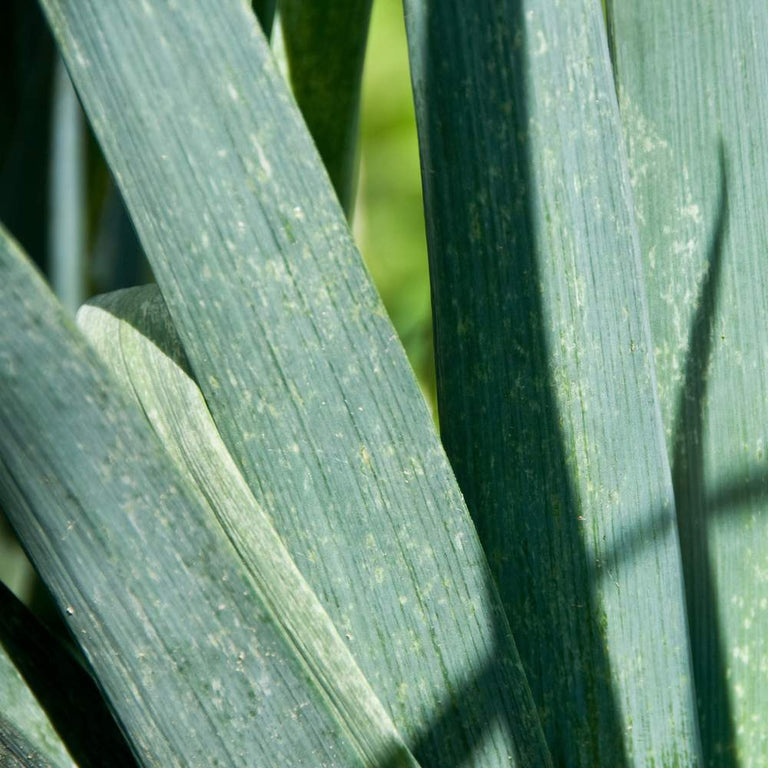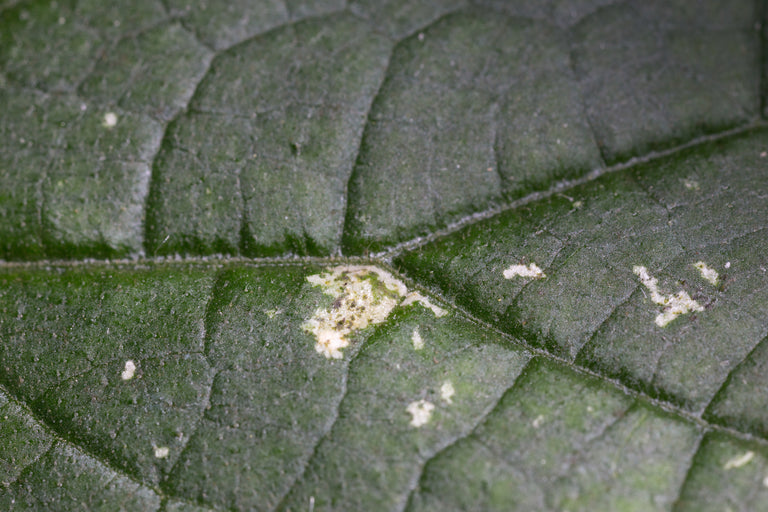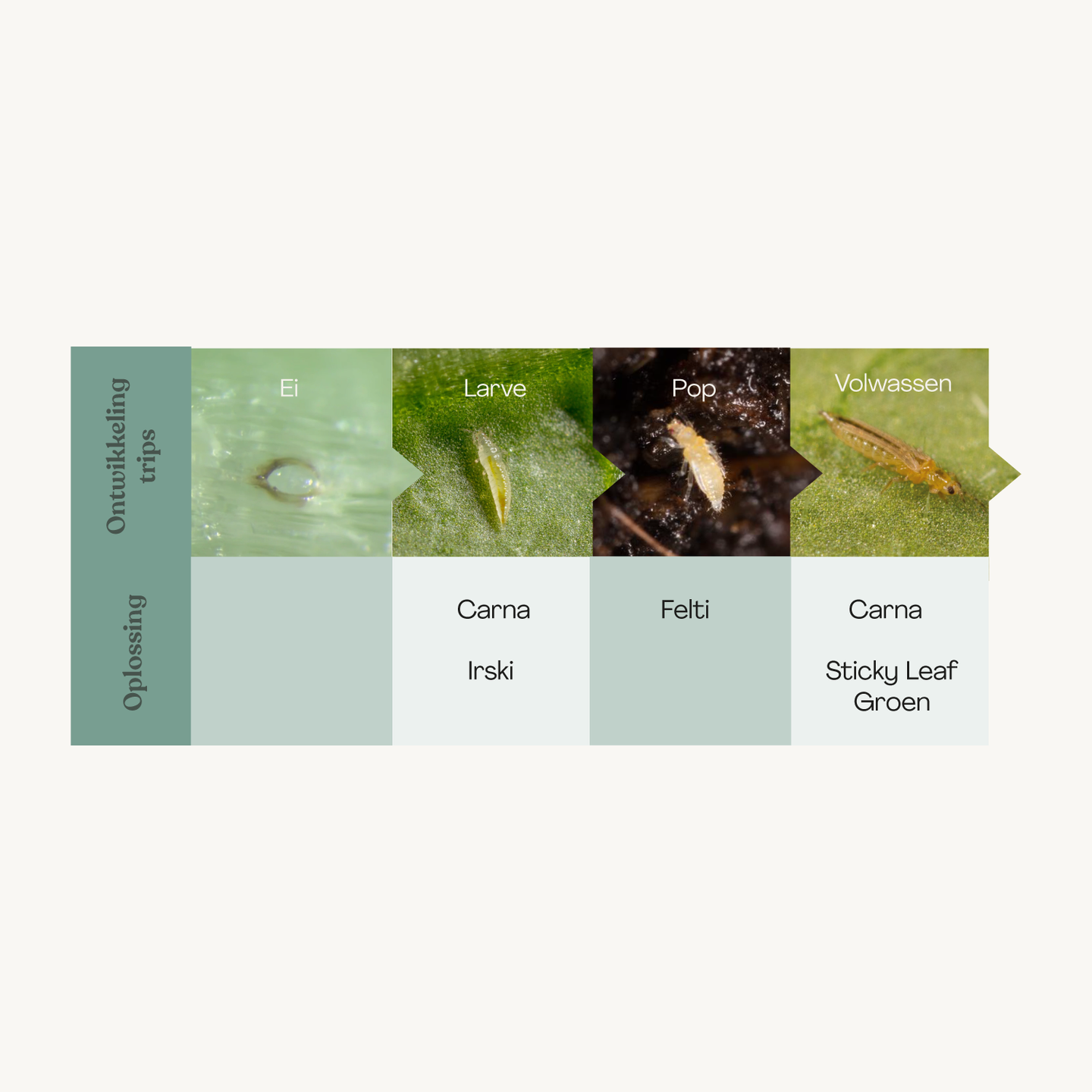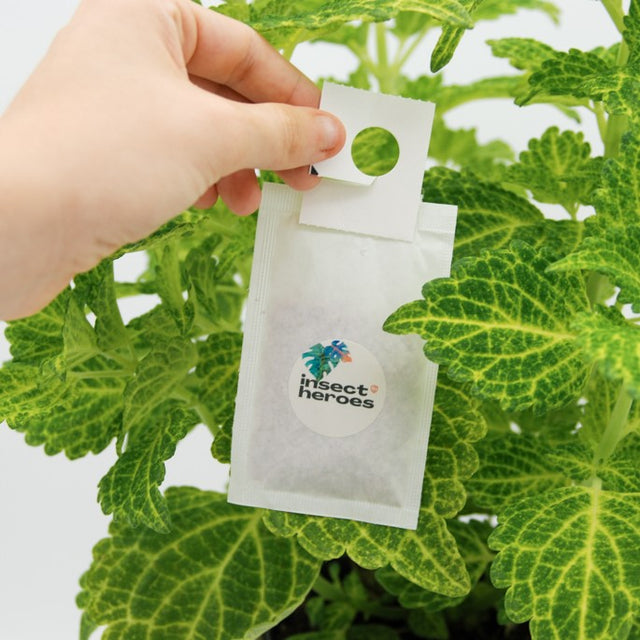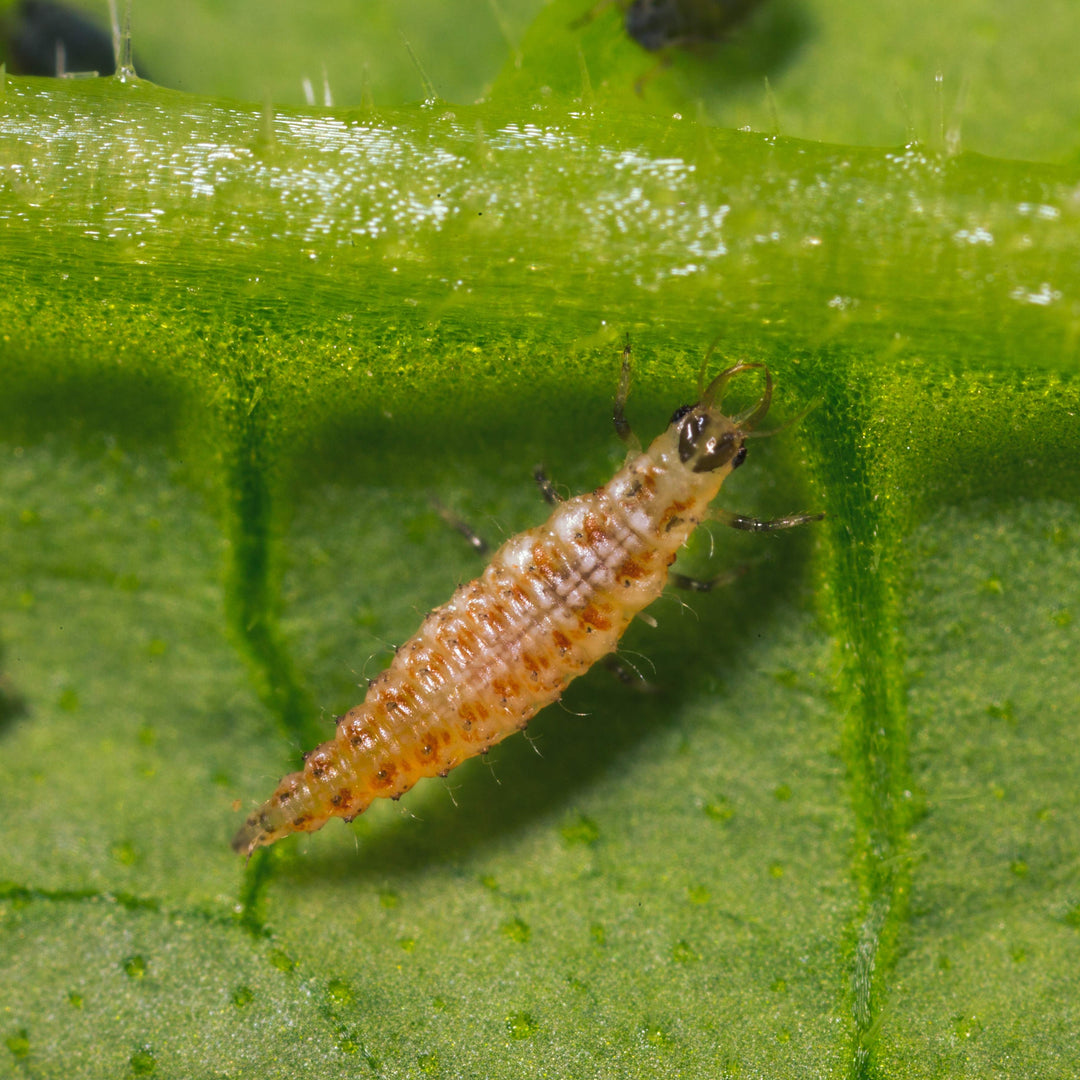Identify, control and prevent thrips
Trips herkennen
Tripsen, ook wel donderbeestjes of onweersbeestjes genoemd, zijn zo klein, dat je goed moet speuren om ze te vinden. Volwassen tripsen hebben een langwerpig lijf met rafelige vleugeltjes. Ze zijn ongeveer 1-2 mm groot en vaak geel, bruin of zwart van kleur. Deze kleine beestjes vind je op veel verschillende kamerplanten zoals Monstera, Calathea, Alocasia en orchideeën. Ook in de moestuin kan je trips tegenkomen op prei, ui of peper.
Trips ontwikkeling
De eitjes van trips zijn heel klein en wit tot geel van kleur. Met het blote oog zijn ze niet te zien. De trips maakt een gaatje in het blad of de stengel en legt hier haar eitje in. Zo is het eitje goed beschermd.
Uit de eitjes kruipen de larven van trips: lichtgekleurd en zonder vleugels. De larven beginnen gelijk te eten aan de onderkant van de bladeren. Afhankelijk van de soort, verpopt de larve zich in de grond of op het blad.
De trips pop ligt volledig stil en eet niet. In deze periode worden de vleugels gevormd. Uit de pop kruipt een volwassen trips, met twee paar vleugeltjes.
In totaal duurt de ontwikkeling van ei tot volwassen trips bij kamertemperatuur ongeveer 25 dagen. De volwassen trips leeft tussen de 10 en 30 dagen. In die periode legt een vrouwtjes trips eieren, tot wel 100 eitjes in haar leven.
Trips schade
Trips veroorzaakt schade door plantencellen leeg te zuigen. Hierdoor komen er zilvergrijze of bruine vlekken op het blad: de dode plantencellen. Zwarte stipjes in de grijze vlekken zijn uitwerpselen van trips. Trips begint vaak te eten aan de onderkant van het blad. Bij een ernstige besmetting is ook schade aan de bovenkant van het blad te zien.
Lichte vlekken op het blad betekent niet altijd direct dat je te maken hebt met trips. Er zijn veel plaaginsecten die zuigen aan het plantensap en lichte vlekken op de bladeren achterlaten. Zoek daarom altijd of je volwassen trips of larven van trips kunt vinden op het blad.
Trips bestrijden op natuurlijke wijze
Trips kun je eenvoudig en effectief bestrijden met het Insect Heroes Optimized bestrijdingspakket. Het pakket bevat Carna gaasvlieglarven, Irski roofmijten, Felti aaltjes en Sticky Leaf vangkaarten. Zo pak je alle levensstadia van trips aan.
Larven van trips bestrijden
De larven van trips kunnen worden bestreden met Irski roofmijten en Carna gaasvlieglarven. Irski en Carna hebben elk hun kwaliteiten. Irski roofmijten worden geleverd in een speciaal kweekzakje en kunnen lang de plant beschermen. Carna gaasvlieglarven zijn erg hongerig en eten de larven én volwassen trips.
Volwassen trips bestrijden
Niet alleen Carna gaasvlieglarven bestrijden de volwassen trips, ook de Sticky Leaf vangkaarten. De volwassen tripsen vliegen tegen de vangkaart aan en blijven plakken op de sterke lijm.
Poppen trips bestrijden
Bij sommige soorten trips laat de larve zich op de grond vallen en verpopt tot volwassen trips. De pop kan worden bestreden met Felti aaltjes.
Trips voorkomen
Het liefst wil je een trips besmetting voor zijn! Hier geven we 4 tips om trips te voorkomen in kamerplanten:
Schoonmaakbeurt
Neem elke maand de bladeren van de plant voorzichtig af met een natte doek of bijvoorbeeld de Plant Soap spray. Ook kan je de plant buiten afspoelen of onder de douche zetten. Zorg er dan wel voor dat de grond en de wortels niet te nat worden. Dek af met een zeil of vuilniszak.
Check de bladeren
Controleer regelmatig de bladeren, en dan vooral de onderkant! Let op vlekjes op de bladeren, stipjes of langwerpige kleine beestjes. Weet je niet zeker of je plant last heeft van trips? Stuur je foto dan naar info@insectheroes.nl en we kijken graag met je mee.
Preventieve roofmijten
Zet preventief Irski roofmijten in om trips te voorkomen. Zodra de trips larven uit het ei kruipen, staat er gelijk een legertje Irski's klaar om aan te vallen. De Irski roofmijten beschermen je planten tussen de 4 en 6 weken.
Gelukkige planten
Gezonde planten kunnen zich goed verweren tegen plagen. Onderzoek of je kamerplanten nog gelukkig zijn: Krijgen ze genoeg water, zon, warmte en voeding? Zoek wat jouw specifieke soort plant nodig heeft.
Andere manieren om trips te bestrijden
Trips bestrijden kan op verschillende manieren, met elk hun eigen voor- en nadelen. Hier bespreken we vijf methoden om trips te bestrijden, met uitzondering van natuurlijke vijanden:
Trips bestrijden met azijn
Azijn kan een effectief middel zijn tegen trips. Door een oplossing van één deel azijn op tien delen water te maken en dit op de aangetaste planten te spuiten, kun je trips doden. Het voordeel van azijn is dat het een makkelijke oplossing is en veel mensen het in huis hebben. Echter, azijn kan de bladeren van de plant beschadigen als het in hoge concentraties wordt gebruikt of te vaak wordt toegepast.
Trips bestrijden met afwasmiddel
Een andere methode om trips te bestrijden is het gebruik van een afwasmiddeloplossing. Meng een paar druppels afwasmiddel met water en besproei de aangetaste planten grondig. Dit verstikt de trips en dood ze snel. Het nadeel van deze methode is dat je de behandeling regelmatig moet herhalen. Ook kan een te hoge concentratie afwasmiddel de plant beschadigen, dus gebruik deze oplossing met mate.
Trips bestrijden met spiritus
Spiritus, zoals gedenatureerde alcohol, kan ook effectief zijn tegen trips. Meng een klein beetje spiritus met water en breng dit aan op de aangetaste delen van de plant met een watje of een doekje. Spiritus doodt de trips snel. Echter, spiritus kan bij herhaaldelijk gebruik de plant beschadigen, vooral de bladeren. Zorg ervoor dat je voorzichtig en nauwkeurig te werk gaat.
Trips bestrijden met groene zeep
Groene zeep is een populair middel om trips te bestrijden. Meng een paar druppels groene zeep met water en besproei de aangetaste planten. Deze methode verstikt de trips en is relatief onschadelijk voor het milieu en de gezondheid. Het nadeel is dat je de behandeling regelmatig moet herhalen om nieuwe generaties trips effectief te bestrijden. Bij te frequent of geconcentreerd gebruik kan groene zeep de bladeren van de plant verbranden, dus pas op met de dosering.
Trips chemisch bestrijden
Er zijn verschillende chemische middelen op de markt die effectief zijn tegen trips. Deze middelen bevatten vaak insecticiden zoals spinosad, imidacloprid of lambda-cyhalothrin. Hoewel deze middelen snel en effectief trips doden, hebben ze ook aanzienlijke nadelen. Chemische bestrijdingsmiddelen kunnen schadelijk zijn voor het milieu, vooral als ze buiten worden toegepast en in waterwegen terechtkomen. Ze kunnen ook schadelijk zijn voor nuttige insecten, huisdieren, kinderen en je eigen gezondheid. Let daarom altijd goed op de samenstelling en vermijd producten met giftige stoffen.
Door bewust te kiezen voor de juiste bestrijdingsmethode, kun je trips effectief bestrijden en tegelijkertijd de impact op het milieu en de gezondheid minimaliseren.
Weet je niet zeker van welke plaag je last hebt?
Bekijk de overzichtspagina met alle plagen.















































